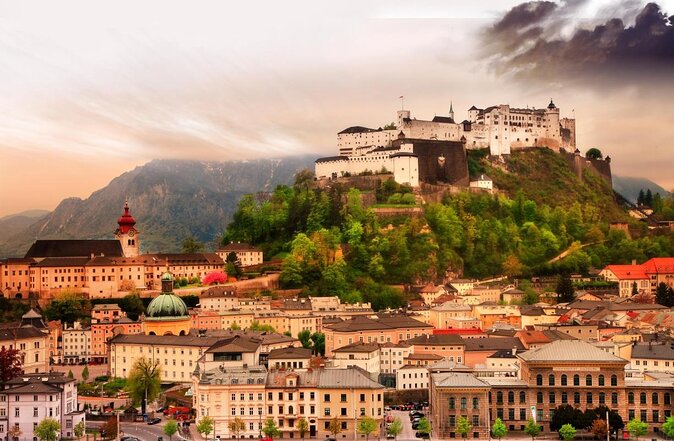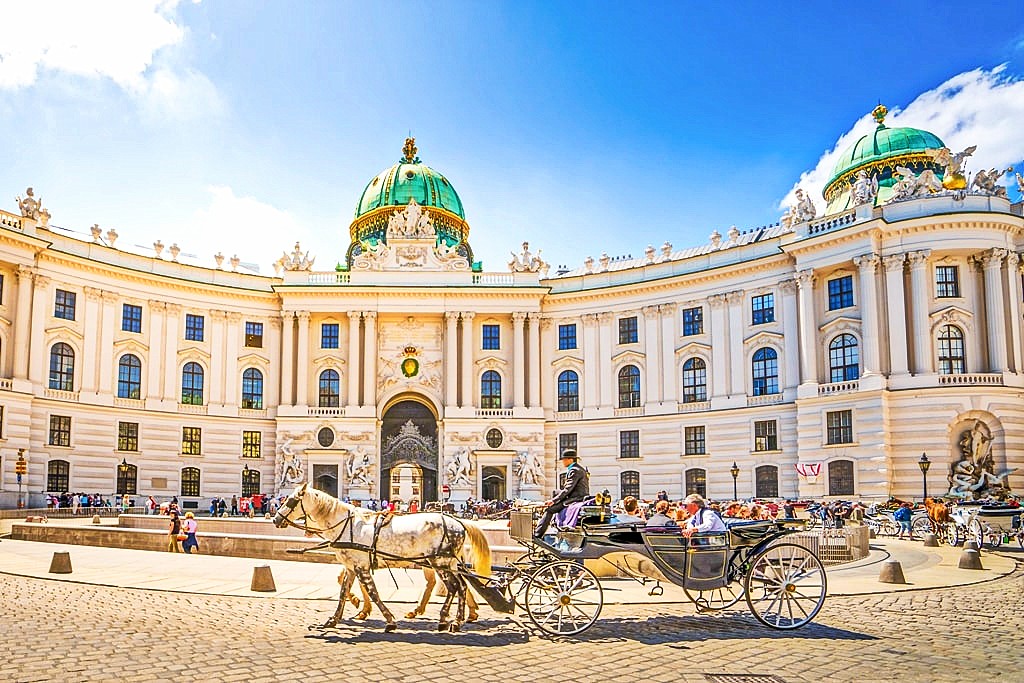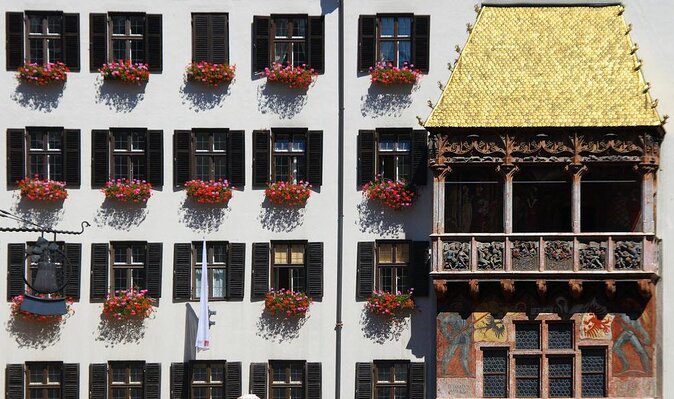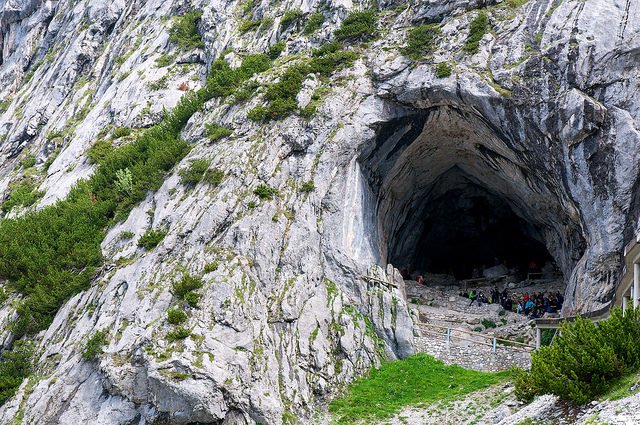Austria is one of the most popular vacation spots in Europe, and there are fun things to do there all year long. Because the country has some of the best sports in Europe, the winter is almost as busy in the beautiful mountain areas as the summer.
People come to this Alpine republic for its beautiful towns, like Vienna (Wien), which is the historic capital, and Salzburg, which is where Wolfgang Amadeus Mozart was born.
One of the tiniest countries in Europe, Austria is mostly made up of high mountains and uplands. The Eastern Alps cover about 60% of its land area. In the north of the country, the River Danube runs from west to east for about 350 kilometers, which makes it an even more appealing place for tourists. With this list of Austria’s best tourist spots, you can find the best places to see and things to do.
1. Innsbruck’s Hofburg and Hofkirche
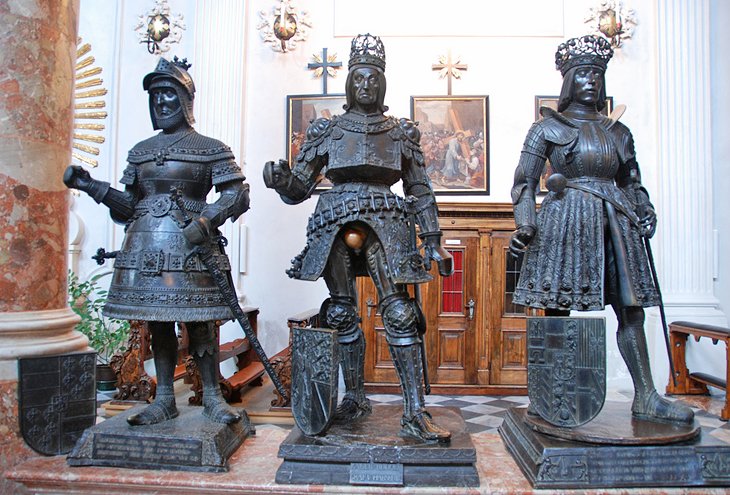
During his rule in the late 1400s and early 1500s, Emperor Maximilian I made Innsbruck the main home and seat of the Hapsburg government. This made the city the center of Europe. Empress Maria Theresa changed his house, the Hofburg, into a Baroque and Rococo style in the 18th century. The most beautiful parts of a tour are seeing the royal rooms, the Giant Hall (Riesensaal), and the painted ceilings all over the building.
The Hofkirche, or Court Church, is best known for its beautiful Tomb of Emperor Maximilian I, who died in 1519. The monument’s main feature is the huge black marble sarcophagus with a bronze statue of the Emperor inside. It is widely thought to be the best piece of German Renaissance art. Twenty-four marble reliefs on either side of the tomb show events from the Emperor’s life. Around it are twenty-eight life-size bronze statues of the Emperor’s ancestors and contemporaries (watch out for King Arthur!). Along with the statues, there are 23 bronze statues of Habsburg family saints and 20 bronze busts of Roman rulers.
- Address: Rennweg 1/3, 6020 Innsbruck
2. Schönbrunn Palace, Vienna
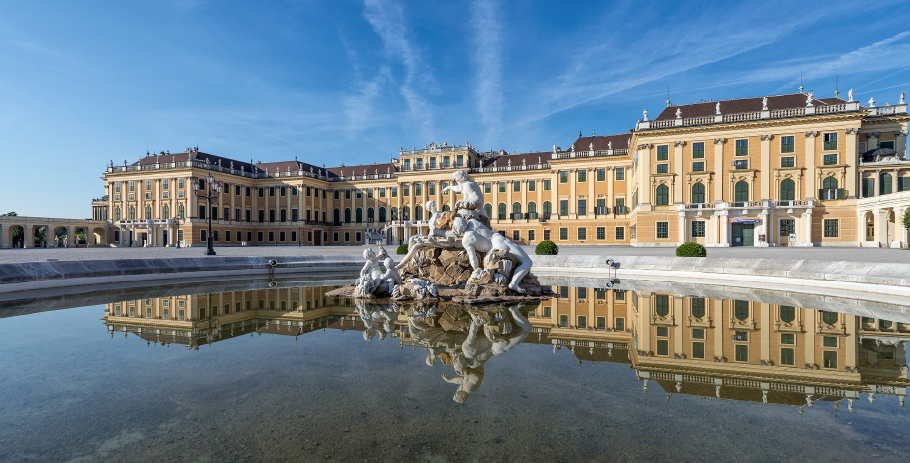
The Baroque Schonbrunn Palace is on the outskirts of Vienna. It was finished in the early 1700s and was later used by Empress Maria Theresa as a summer home.
The Royal Apartments, the Great Gallery with its fancy ceiling paintings, the Million Room, and Maria Theresa’s lounge with its carved and gilt rosewood panels are some of the most interesting parts of a tour of the palace’s 40 public rooms. You’ll also see the beautiful Hall of Mirrors, which has mirrors with gold Rococo frames. The house has 1,441 rooms, and there are 500 acres of Baroque-style parks and gardens behind it.
There are many things to see and do on the grounds of Schonbrunn, including formal gardens, a labyrinth, the Palm House with butterflies and tropical and exotic plants, an Alpine garden with a farmhouse, Europe’s oldest zoo, and the Classical Gloriette, a large marble building that sits on top of a hill above the gardens.
Dozens of old state coaches and sleighs are on show in a carriage museum in the building that used to be the Winter Riding School. The palace and grounds as a whole are a UNESCO World Heritage Site.
- Address: Schönbrunner Schloßstraße 47, 1130 Vienna
Since the beginning of Christianity in Europe, Salzburg has been a spiritual center because it was home to Prince Archbishops. Built by St. Rupert in 690 AD, the Benedictine Abbey of St. Peter is right in the middle of the Altstadt (Old Town). It was the home of the Archbishops until the early 1100s.
Some of the best artists and architects of their time worked for the Prince Archbishops to build and decorate their churches, homes, and monasteries. These have been “updated” to fit the tastes of each new century, but the medieval and Baroque buildings still make for a beautiful old quarter to explore.
The most interesting places are St. Peter’s Abbey and its church, as well as the beautiful graveyard and its catacombs, which are easy to spot because they were used in The Sound of Music.
The church is close by, and if you walk through the colorful Baroque burgher houses, you’ll find charming squares and interesting sights, such as the museum that is now the birthplace of Wolfgang Amadeus Mozart. The Hohensalzburg castle in Salzburg has beautiful towers and cupolas that rise above the city. You can get there by funicular.
4. The Spanish Riding School, Vienna
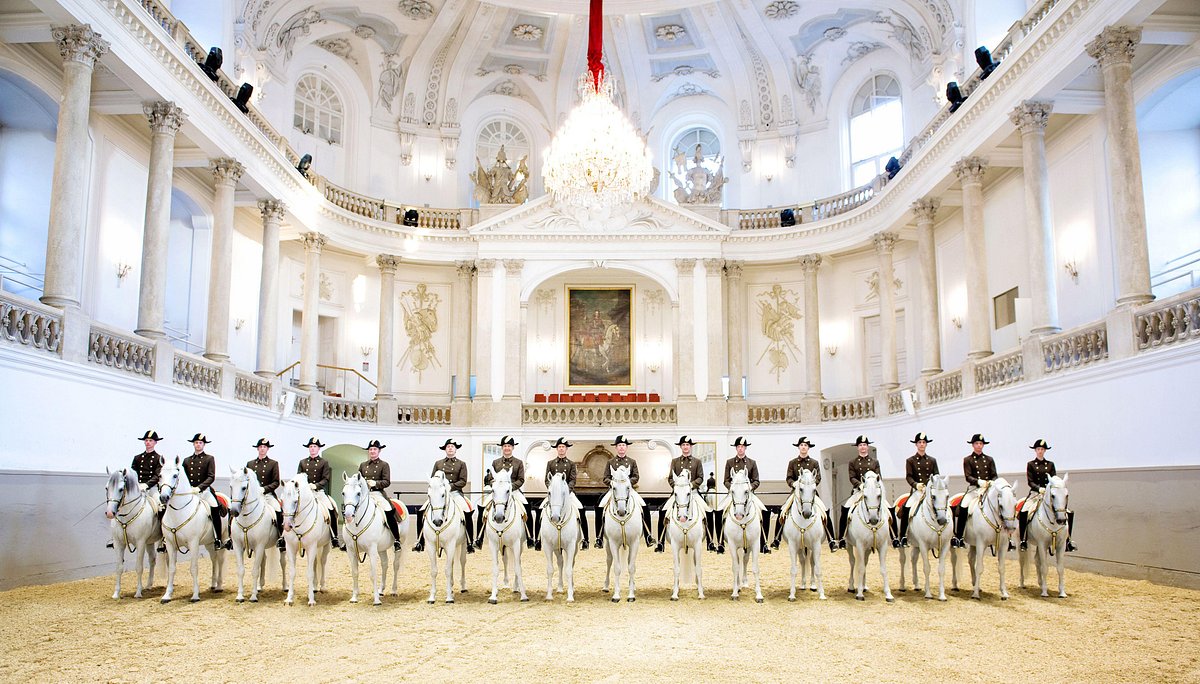
The Spanish Riding School has been around since the reign of Emperor Maximilian II. In 1562, he brought the famous Lipizzaner horses to Austria.
It’s still one of the few places where the classical way of riding that the upper class liked is still done. One of the best things to do in Vienna is to see the famous horse shows at the Baroque Winter Riding School. These shows have been going on here since the time of Charles VI.
The beautiful hall was built in 1735 so that the elite could show off their riding skills. People really want to see these beautiful animals perform their dancing, so book your tickets online as early as you can.
- Address: Michaelerplatz 1, 1010 Vienna
The beautiful Hofburg Palace in Vienna was home to Austria’s strong monarchy, the Habsburgs, for hundreds of years. One of the best things to do in Austria is to see this house.
The rooms that are now used by the President for state business used to belong to Emperor Joseph II. Since 1275, almost every Austrian king or queen has made additions or changes to buildings. This has led to a lot of different architectural styles, such as Gothic, Renaissance, Baroque, Rococo, and Classicism.
The Hofburg complex is spread out over 59 acres and has 19 courtyards, 2,600 rooms, and many beautiful parks and squares. The Royal Silver Collection and the different dining options that make you feel like you’re at one of the fancy royal banquets that used to happen here are two of the best things about a visit.
The Sisi Museum, which is about Empress Elisabeth’s life, and the Imperial Apartments, which are 19 rooms that were once home to Emperor Franz Joseph and his wife, are also worth seeing.
- Address: Michaelerkuppel, 1010 Vienna
Some of the best-preserved architecture in Austria can be found in the beautiful city of Innsbruck. The city also has some of the strangest and most interesting ancient buildings. This building is one of the most well-known sights in Innsbruck. It’s called the Golden Roof.
This piece of history from the city’s Hapsburg era can be found in the middle of Innsbruck’s Old Town (Altstadt). It hangs on a Late Gothic oriel window of the Neuer Hof, a house that royalty used. As you walk along the arcaded Herzog-Friedrich-Strasse, you can’t miss this great place to take a selfie. When the sun is out at the right time, the roof really does look like it glows.
The Golden Roof is made up of at least 2,657 gilded copper tiles and was added to the building in 1496 to celebrate the marriage of Holy Roman Emperor Maximilian I. It was used as a royal box so the couple could enjoy the events in the square. After taking pictures, you should go to the Golden Roof Museum to learn about the Emperor’s lasting impact.
Do take some time to walk around the narrow, winding streets and alleyways that surround this famous Innsbruck site. This beautiful Austrian city has a lot of beautiful old buildings, and there are also great views of the mountains that surround it.
- Address: Herzog-Friedrich-Straße 15, 6020 Innsbruck
The World of the Ice Giants is the world’s biggest network of ice caves. It is on the western edge of the Tennengebirge. The caves, which are about 30,000 square meters in size, were formed by an underground river in the Tertiary times. They were founded in 1879 and opened to the public in 1912. So far, an amazing 45 kilometers of the network have been examined.
After going around the Great Ice Wall, you’ll reach the huge Hymir Hall, which is covered in beautiful ice sculptures and icicles. The Eistor, or Ice Gate, is a beautiful wall of ice that is 1,775 meters high. It leads to the great Ice Palace. Tours last two hours, and the drive to and from the caves takes a few hours, too. You’ll likely spend all day visiting the area.
8. Krimmler Ache: Austria’s Tallest Waterfalls
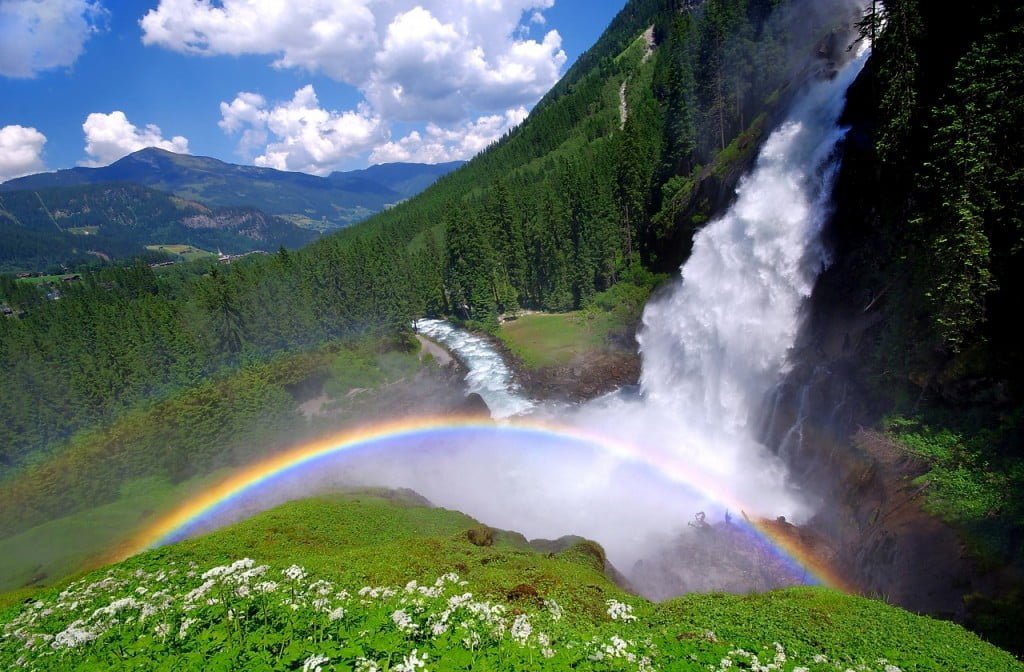
The Krimmler Ache falls 380 meters in three huge waterfalls. It’s a great day trip from the town of Krimml, which is close by. Krimml, which is 1,076 meters above sea level and in a wooded valley high above the Salzachtal, is a great place to stay for a few days if you like to hike.
There are several great walks that lead to waterfalls, as well as a satisfying climb to the Schettbrücke and on to the stunning Krimmler Tauernhaus. Expert walkers can reach the Glockenkarkopf, which is 2,911 meters high and borders Italy, from here.
9. Maria Saal Cathedral
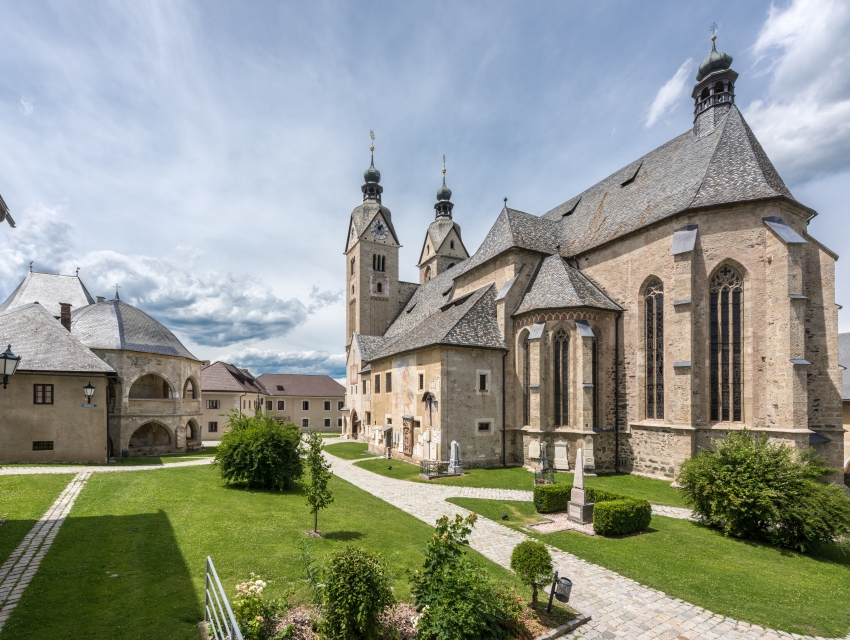
The Church of Maria Saal, which is also known as Maria Saal Cathedral, is on a hill high above the Zollfeld. It is one of the most important religious sites in Carinthia, which is in the southern part of Austria. Bishop Modestus dedicated a church here around the year 750 AD, and the area around it became Christian.
The current church with its two towers was built in the Gothic style in the first half of the 15th century on the ruins of a Roman basilica. It was changed during the Renaissance and Baroque periods.
The west side with its two towers and beautiful old gravestones is one of the best parts. The Keutschach Epitaph from the 1600s, which shows the Coronation of Our Lady, and a Roman stone relief from around the year 300 are two of the most interesting.
10. St. Stephen’s Cathedral in Vienna
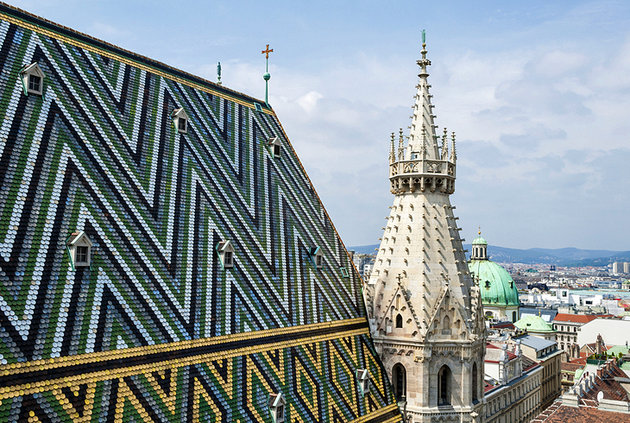
In the old city center of Vienna, the impressive Gothic church of St. Stephen’s (Stephansdom) stands out. In the 1300s, a Late Romanesque church replaced the old Romanesque church built in the 1200s. The huge gate and the Heathen Towers (Heidentürme) still stand.
The choir and the Chapels of St. Eligius, St. Tirna, and St. Catherine were added during the later Gothic rebuilding in the 14th century. The famous 137-meter-high South Tower (Steffl) was built in the next century. During WWII, the church took a lot of damage, so it was rebuilt.
There are 343 steps to the top of the Steffl that lead to the Watch Room, which has great views. Alternatively, you can take a lift to a viewing platform on the North Tower, which is home to the huge Pummerin Bell. You shouldn’t miss the catacombs from the 1400s or the church treasury, which has some of the most important things in the building.
- Address: Stephansplatz 3, 1010 Vienna
FAQ’s
Q1. What makes Austria a top travel destination in Europe?
Austria is a popular travel location because of its beautiful Alpine landscapes, historic buildings, classical music history, and charming cities.
Q2. Which city is known for its imperial history and classical music heritage?
Vienna is the capital city of Austria and is known for its historic sites like Schonbrunn Palace and the Vienna State Opera, as well as its classical music scene and castles in the past.
Q3. What is the iconic symbol of Salzburg, Austria?
Wolfgang Amadeus Mozart was born in Salzburg, which is famous for its famous Hohensalzburg Fortress, an ancient fortress with a view of the whole city.
Q4. Where can I experience the charm of a fairytale town in Austria?
A lot of people think that Hallstatt, which is near the Hallstatter See, is one of the most beautiful places in Austria. It is a must-see place because it is in the mountains and has beautiful buildings.
Q5. Where can I enjoy outdoor activities in the Austrian countryside?
The Austrian Lake District, or Salzkammergut, has beautiful lakes, mountains, and quaint towns. There are lots of chances to go hiking, biking, and doing water sports.




